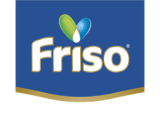
Nutritionist's tips: helping your child adapt to a lighter-tasting formula milk
Can your child adapt to a new formula milk without sucrose and vanilla flavouring? How can mums help their children develop a lighter taste preference, so they do not crave sweet or strong-tasting food?
We have specially invited Samson Chim, a senior registered nutritionist*, to share some tips with mums:
- Allow ample time for your child to develop a lessened preference for sweetness. It’s recommended for mums to plan for an adaptation period of at least 7 days.
- Mums should stand firm and gradually guide the child to adapt to a lighter-tasting formula milk without sucrose and vanilla flavouring. Do not give your child too many choices.
- Mums can give a small amount of snacks (such as cereals, oats, etc.) to their child, along with the new formula milk to help minimize differences in taste.
Based on the formula milk switching table, mums can add a meal using the new formula in the first two days. It’s recommended to do so with the first meal after their child has had sufficient sleep to help with the lighter taste adaptation. Mums should first encourage her child to give it a try. If it doesn’t work out after several attempts, take a break and try again later while keeping the formula milk at an optimal temperature.
With regular intake of sweeter foods, your child tends to absorb excessive calories and may risk developing a sweet tooth and tooth decay. In more severe cases, it may lead to life-long health problems, such as obesity, diabetes, fatty liver and heart disease. Many formula milk in the market have added sucrose and vanilla flavouring as taste enhancement and to provide calories. However, regular consumption of these formula milk may cause your child to get accustomed to sweet foods, and in turn develop a preference for sweeter and stronger tasting food.
In response to the rising trend of diabetic and obese populations, which are getting younger, the World Health Organization (WHO) strongly recommends reducing the intake of free sugars, and urges all countries in the world to strive to reduce it to no more than 10% of the total daily energy (source: “Global Action Plan for the Prevention and Control of NCDs 2013-2020”). Therefore, formulas with no added sucrose and vanilla flavouring has become a global health trend as it helps develop a more natural and lighter taste and curb sugar cravings.
The nutritionist also pointed out that taste preference is a habit; a child's taste can be adjusted within a few days to a week’s time. Similar to the initial introduction to solid foods, constant exposure and trials will help your child form a new habit and adapt to a lighter-tasting formula milk. The absence of sucrose and vanilla flavouring helps curb sugar cravings, which is beneficial to the child’s health and growth in the long run. It is recommended that mums adopt a firm and encouraging attitude. Together with your child, adapt and develop a lighter taste preference for a healthier diet, development and growth.
